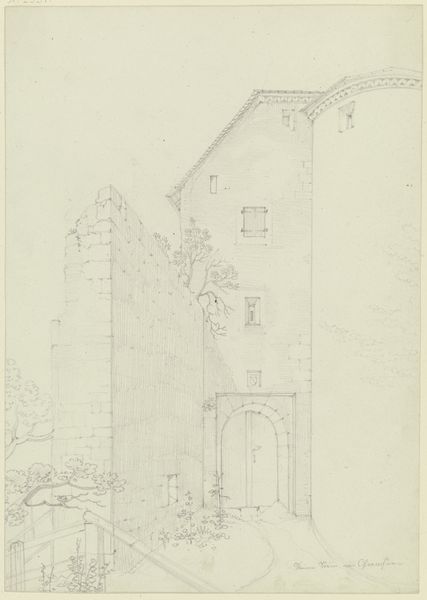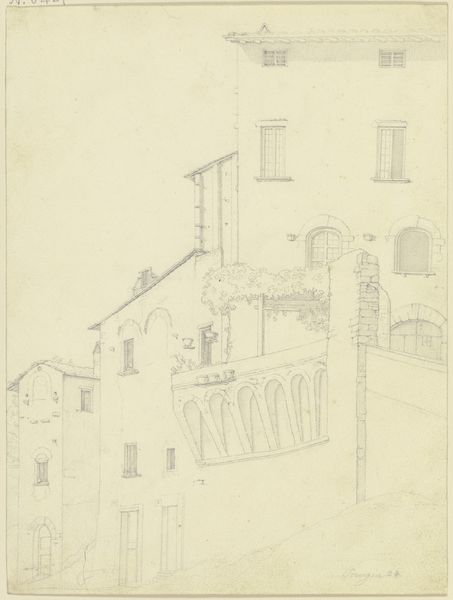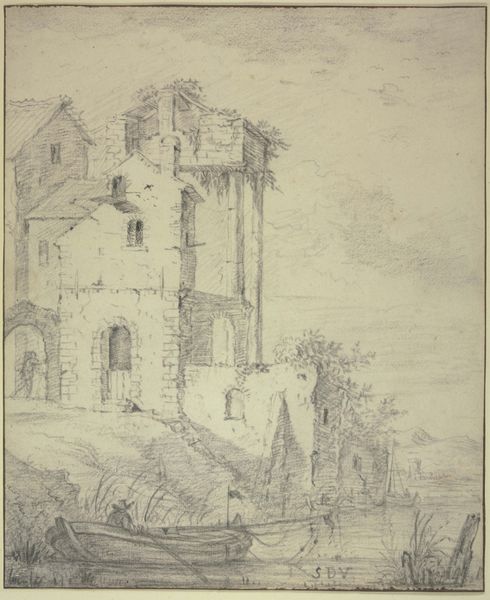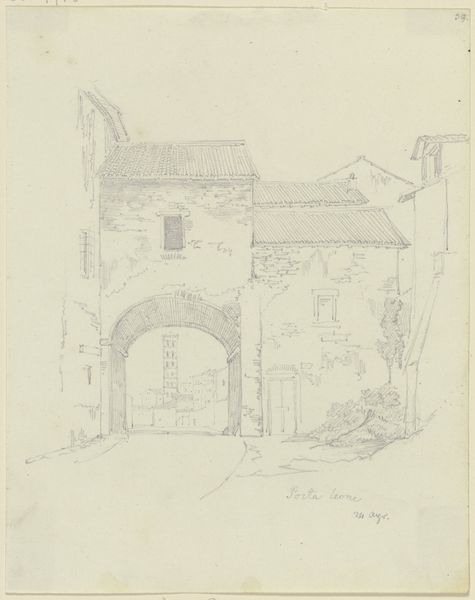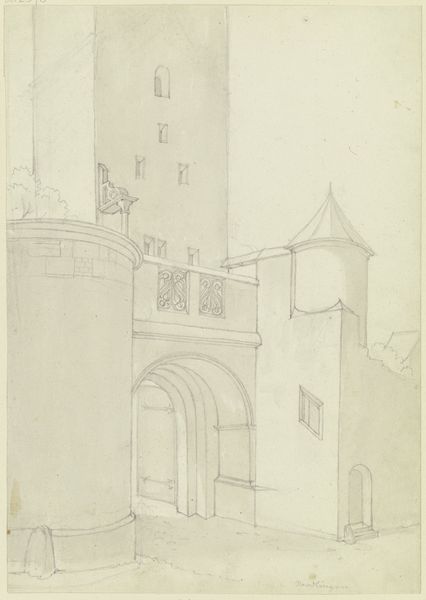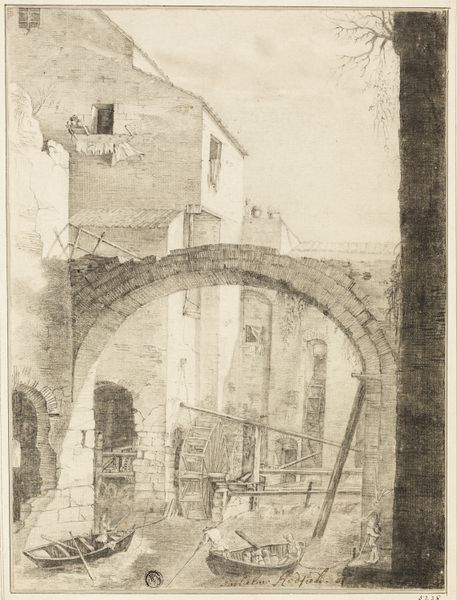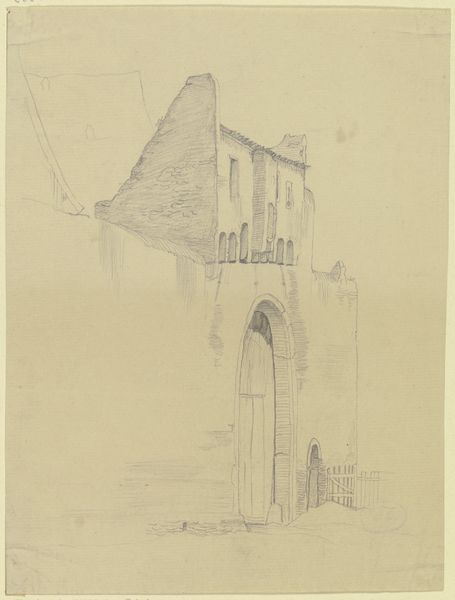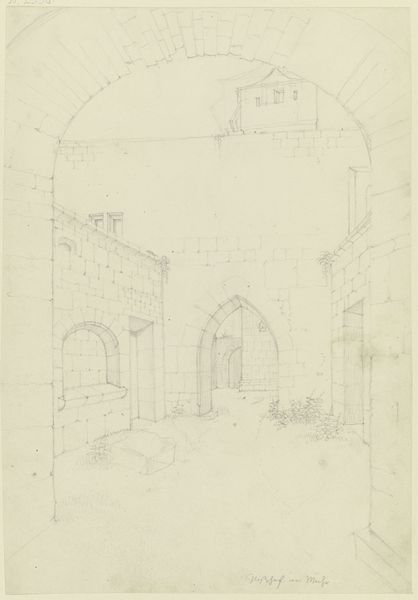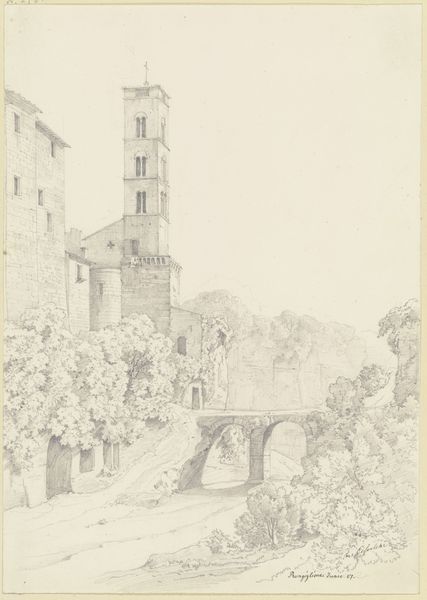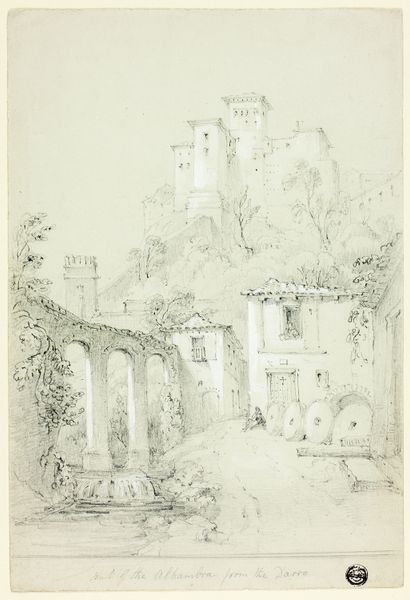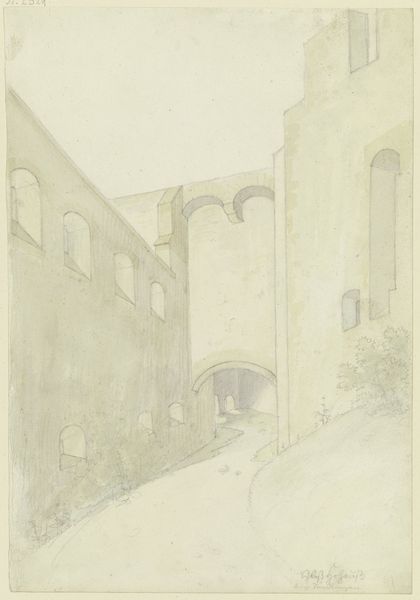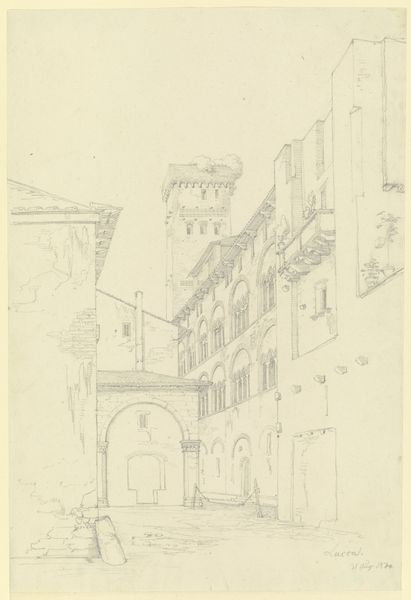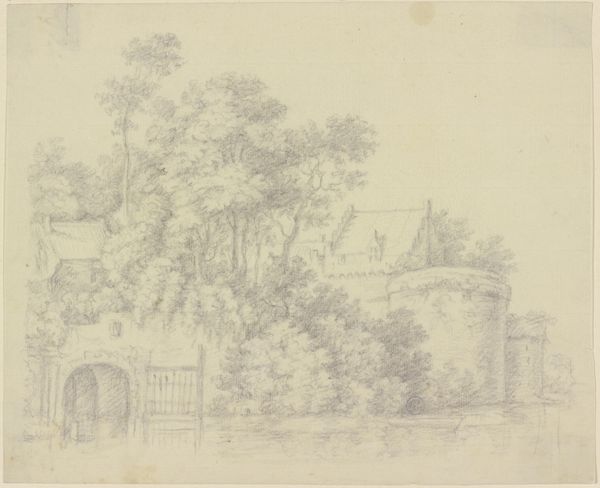
drawing, paper, pencil, architecture
#
drawing
#
16_19th-century
#
landscape
#
etching
#
paper
#
pencil
#
architecture
Copyright: Public Domain
Editor: So, this is Karl Ballenberger's "Neuenmuhr Castle," a drawing done sometime in the 19th century, using pencil and etching on paper. The drawing has this really delicate quality; it’s like a whisper of a castle, not a declaration. What strikes you about this piece? Curator: I'm immediately drawn to the artist's process and materials. Notice the labor involved in the etching and the subtle gradations achieved through pencil. Ballenberger’s choice to depict architecture—a symbol of power and permanence—with such fragile mediums, complicates the reading. The castle, normally representing stability, appears here as something transient. Consider the social context: Was Ballenberger commissioned? For whom was he producing this image, and what was the intended consumption of it? Editor: That's interesting. It almost feels like he's undercutting the castle’s grandeur, reducing it to just lines on paper. Almost like he's processing its material existence, it being stone brick. Curator: Precisely. We often separate "high art," like painting and sculpture, from "craft," but here, Ballenberger merges the two. The "drawing" itself becomes a form of labor, transforming base materials—paper, pencil, and acid for etching—into a commodity. Think about the labor of quarrying and constructing that castle in the first place. Do you see the relationship he's implying? Editor: Yes, it is starting to make more sense to me, the attention to labor in both. The choice to draw, and the castle itself. But is the labor visible? I'm unsure I would see the materiality as immediately...visible. Curator: Consider that materiality isn't always visible, sometimes, it's felt through its absence. The delicate etching highlights that sense of loss; he almost highlights the production, over the object itself. And I do wonder if that could mean Ballenberger had intentions regarding class or something similar. Food for thought. Editor: This conversation’s really opened my eyes to thinking about art beyond just what it depicts and starting to consider the real work that goes into creating it and its implications for production and society at large. Curator: Indeed. By analyzing process and material, we uncover the often-hidden socio-economic dimensions embedded within the artwork itself.
Comments
No comments
Be the first to comment and join the conversation on the ultimate creative platform.
